Geometric Transformations
Sports, music, engineering feats, art, movies and many more areas all have something in common that is not often realized. This commonality stems from mathematics, or more specifically geometry, and is known as geometric transformations. Take a minute to loook out the window or around the space you are in. Think about basic everyday objects; basic structures that people encounter as they live. From the car or bus you may have rode in to go to school or work, the road, sidewalk or path you have walked on, or the buildings throughout your town. Geometry is everywhere, specifically geometric transformations. With an understanding of geometric transformations translation, reflection, rotation, and dilation, everyone can see the geometry that is all around them. It is a more fascinating world when people understand the importance of geometry and the impact it plays in their life. Understanding geometry and the role it plays in our society will help people to navigate and create new and better ideas to further build up our interesting world and perhaps help those who dislike geometry to find more appreciation for one of the literal building blocks of our society.
Geometric transformations are the process in which an object's position is changed. The most common geometric transformations are translations, reflections, rotations and dilations. These transformations allow the complete manipulation of an object on the Cartesian plane. Examples of transformations can commonly be seen in daily life. All that is needed to see these transformations is education in geometry transformations and an observant eye and curious mind.
"But when will geometric transformations ever be used in careers outside of geometry or mathematics?" Or perhaps this phrase would sound familiar, "When would we use geometric transformations?" The simplist answer to these questions would be, more often then one might realize. There are a variety of careers that make use of geometric transformations, some of which will be explored here on this site. Take a look!
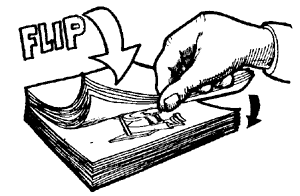 The art of filmmaking, specifically movies with animation is a common example of how geometric transformations are used. Animated movies started from drawings being flipped through at a quick rate to give the objects movement when projected onto a screen. These individual drawings needed to be transformed from one to another in order for the desired object to complete a task.
The art of filmmaking, specifically movies with animation is a common example of how geometric transformations are used. Animated movies started from drawings being flipped through at a quick rate to give the objects movement when projected onto a screen. These individual drawings needed to be transformed from one to another in order for the desired object to complete a task.
Due to the capability of current technology, the transfomation of the objects has increased in complication but despite these advancements the basics of geometric transformations remain. For example, an animated ball being tossed from one player to another requires a sequence of translations and rotations. Or the sun rising or setting in the foreground is made of a sequence of translations and dilations. Without the precise geometric understanding of translation, reflection, rotation and dilation animated movement would be difficult to interpret or choppy in movement. Every movie scene can be broken down into an assortment of these geometric transformations and thanks to these definitions of geometry we can enjoy these animated films.
Try it out!
An activity to practice a variety of transformations is to create your own flip book. The number of "flips" or pages are included in your book would determine the amount of transformations used in your animation. Try the example of the sun rising from behind some mountains or create your own animation. Be creative! Remember with geometric transformations you can animate anything!
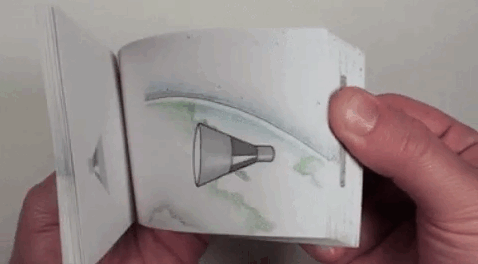
Check out this video of an animator using geometric transformations to animate a Disney classic "The Incredibles", "Math meets Artistry" presented through Kahn Academy.
Game developers also use geometric transformations when developing their games. Similar to how objects are moved about the screen in animated movies, to move the entities about the screen in video games and to then interact with others objects geometric transformations are highly used. Objects are placed within a grid, similar to a cartesian plane where the game developers can use geometric transformations to move and change both the scenery and the characters.
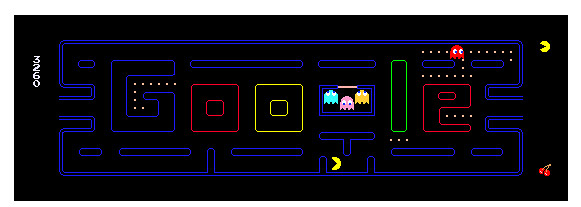
PacMan, is a popular video game and while it may seem trivial in animation as compared to newer video games, it is a perfect example of geometric transformations playing a large part in the games makeup. PacMan is played within a level with varying paths about the screen where not only PacMan can move around but the ghosts can move around in as well. The movement of PacMan in simple terms involves translations and reflections for the majority of the game play.
Can you see these transformations while playing Pacman? Can you find any other transformations? What about other video games you have seen or played?
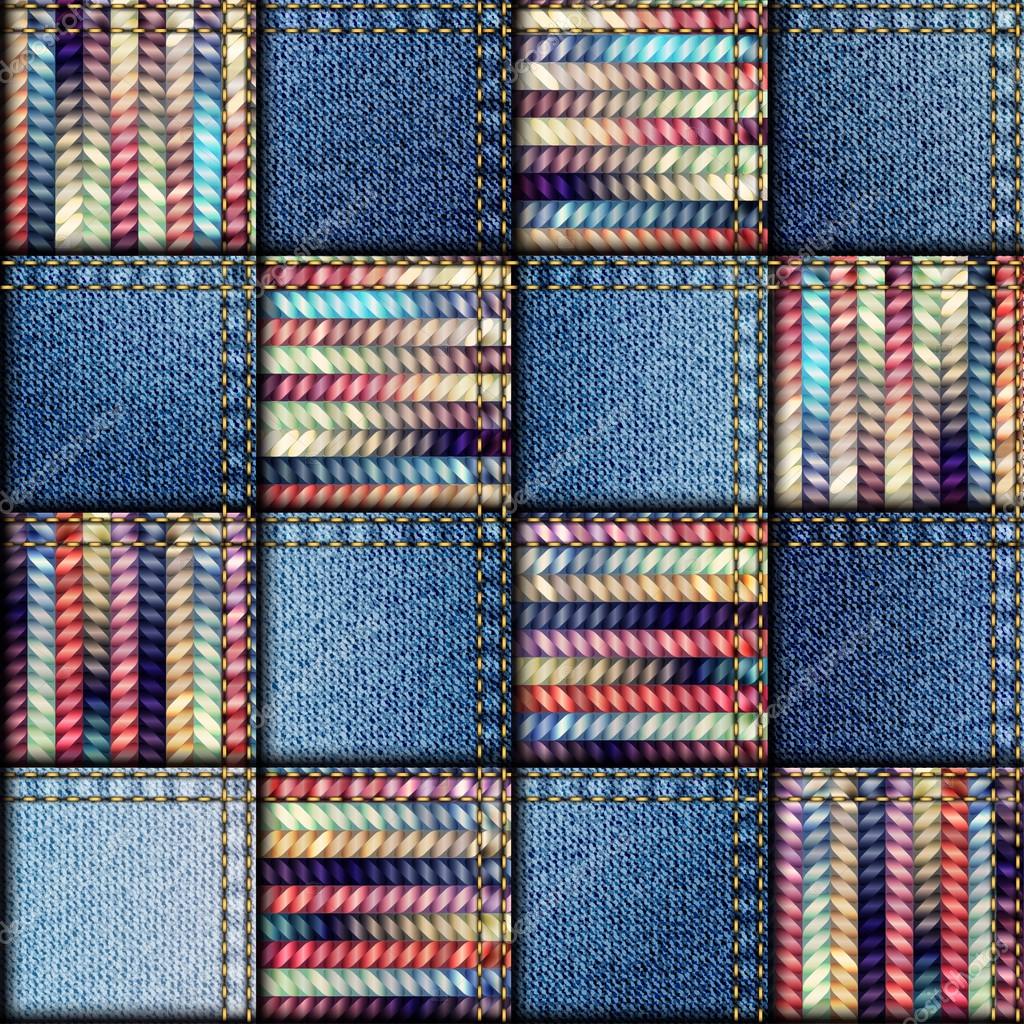
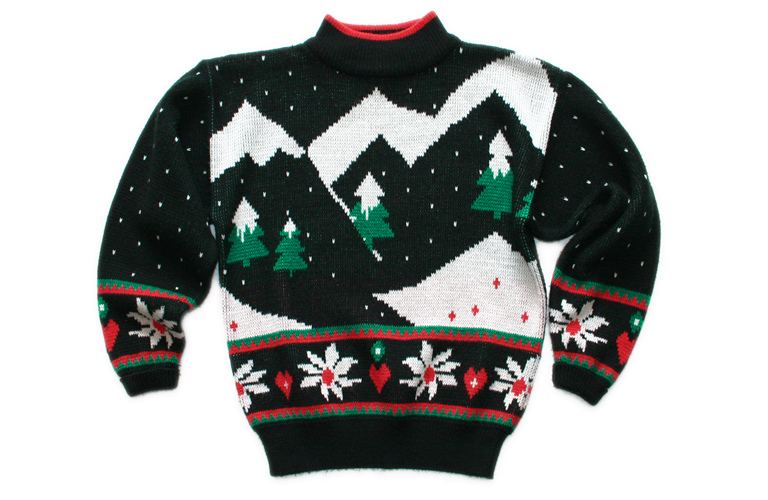
Fashion designers also use geometric transformations in their field of work. Patterns are commonly used and created with geometric transformations. A piece of clothing pattern can be designed and then through the use of geometric transformations, the image can be replicated throughout the fabric using translations, reflections, rotations and dilations. A simple example of fashion designers using reflections on a piece of clothing is designing a christmas sweater with a pattern across the bottom of a sweaters sleeve.
Quilting is also a great example of how geometric transformations are used in desigining patterns. Quilting is the practice of arranging a variety of fabrics into a design. Some view quilting like solving a puzzle as they rotate fabric and or translate the pieces to the desired image.
Can you think of any other fields of work that may use geometric transformations? Take a minute to think about the different careers you or those around you have explored. You may be suprised by how often geometric transformations are used in different careers.
Geometric transformations are evident in society and throughout the world. These transformations, first introduced and publicized by Euclid, make up many content areas of society. To learn more of the history and background of Geometric Transformations check out the page "History and Background". Without geometric transformations, progress in manufacturing, entertainment, building, inventions and basically all fields would lack the structure that makes up society.
In the page "Introduction of Geometric Transformations" we will go into greater depths of translations, rotations, reflections and dilations.
Geometric transformations are the process in which an object's position is changed. The most common geometric transformations are translations, reflections, rotations and dilations. These transformations allow the complete manipulation of an object on the Cartesian plane. Examples of transformations can commonly be seen in daily life. All that is needed to see these transformations is education in geometry transformations and an observant eye and curious mind.
"But when will geometric transformations ever be used in careers outside of geometry or mathematics?" Or perhaps this phrase would sound familiar, "When would we use geometric transformations?" The simplist answer to these questions would be, more often then one might realize. There are a variety of careers that make use of geometric transformations, some of which will be explored here on this site. Take a look!

Due to the capability of current technology, the transfomation of the objects has increased in complication but despite these advancements the basics of geometric transformations remain. For example, an animated ball being tossed from one player to another requires a sequence of translations and rotations. Or the sun rising or setting in the foreground is made of a sequence of translations and dilations. Without the precise geometric understanding of translation, reflection, rotation and dilation animated movement would be difficult to interpret or choppy in movement. Every movie scene can be broken down into an assortment of these geometric transformations and thanks to these definitions of geometry we can enjoy these animated films.
Try it out!
An activity to practice a variety of transformations is to create your own flip book. The number of "flips" or pages are included in your book would determine the amount of transformations used in your animation. Try the example of the sun rising from behind some mountains or create your own animation. Be creative! Remember with geometric transformations you can animate anything!

Check out this video of an animator using geometric transformations to animate a Disney classic "The Incredibles", "Math meets Artistry" presented through Kahn Academy.
Game developers also use geometric transformations when developing their games. Similar to how objects are moved about the screen in animated movies, to move the entities about the screen in video games and to then interact with others objects geometric transformations are highly used. Objects are placed within a grid, similar to a cartesian plane where the game developers can use geometric transformations to move and change both the scenery and the characters.

PacMan, is a popular video game and while it may seem trivial in animation as compared to newer video games, it is a perfect example of geometric transformations playing a large part in the games makeup. PacMan is played within a level with varying paths about the screen where not only PacMan can move around but the ghosts can move around in as well. The movement of PacMan in simple terms involves translations and reflections for the majority of the game play.
Can you see these transformations while playing Pacman? Can you find any other transformations? What about other video games you have seen or played?


Fashion designers also use geometric transformations in their field of work. Patterns are commonly used and created with geometric transformations. A piece of clothing pattern can be designed and then through the use of geometric transformations, the image can be replicated throughout the fabric using translations, reflections, rotations and dilations. A simple example of fashion designers using reflections on a piece of clothing is designing a christmas sweater with a pattern across the bottom of a sweaters sleeve.
Quilting is also a great example of how geometric transformations are used in desigining patterns. Quilting is the practice of arranging a variety of fabrics into a design. Some view quilting like solving a puzzle as they rotate fabric and or translate the pieces to the desired image.
Can you think of any other fields of work that may use geometric transformations? Take a minute to think about the different careers you or those around you have explored. You may be suprised by how often geometric transformations are used in different careers.
Geometric transformations are evident in society and throughout the world. These transformations, first introduced and publicized by Euclid, make up many content areas of society. To learn more of the history and background of Geometric Transformations check out the page "History and Background". Without geometric transformations, progress in manufacturing, entertainment, building, inventions and basically all fields would lack the structure that makes up society.
In the page "Introduction of Geometric Transformations" we will go into greater depths of translations, rotations, reflections and dilations.